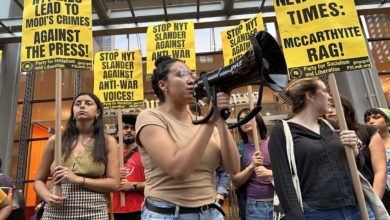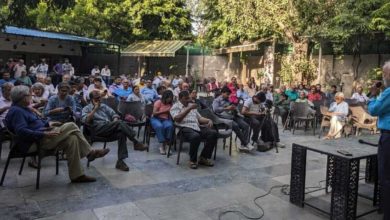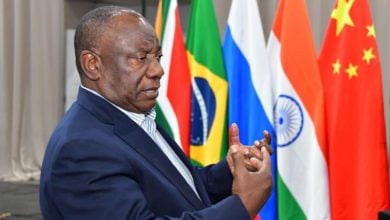On May 13, India’s massive, multi-phase election ended with a surprisingly strong victory for the ruling Congress Party. The Congress Party leads a parliamentary grouping known as the United Progressive Alliance that won 262 out of the 543 members, the most seats of any single party.
 |
Over the past decade, India has often been mentioned as one of the new rising “world powers.” Indeed, from 2003 to 2008, India’s GDP grew at its fastest pace ever in any five-year period. This growth, however, was based primarily on capital inflows that comes from Western countries .
Indian economists describe the situation: “India’s recent bout of high growth (2003-08) was mainly the result of the sea of liquidity from the U.S. … These inflows fueled a steep rise in bank lending to middle and upper class consumers for houses and automobiles. This in turn fueled demand in a whole range of industries. Inflows of foreign speculative capital blew large bubbles in the share market and the real estate sector. … All these industries are capital intensive and create little employment (with the partial exception of construction).” (Aspects of India’s Economy, 47)
Some Indian conglomerates, such as Tata and ArcelorMittal, became worldwide leaders in industries such as automotive and steel. Yet, it was clear this economic growth was uneven and primarily for the “middle and upper class.”
While a few have seen their wealth expand, the concentration of poverty in India has only intensified. More than 200 million people in India suffer from hunger, ranking it 66 out of 88 countries according to a 2008 Global Hunger Index. In the Madhya Pradesh state, 60 percent of more than ten million children suffer from malnutrition.
Making matters worse, India has one of the highest rates of farmer suicides in the world. In April, 1,500 farmers committed mass suicide in the state of Chattisgarh after being driven into debt.
The exploitation of working people in India is tremendous. India’s second largest employment sector after agriculture is textiles. In the southern textile-producing state of Tamil Nadu, workers take home only $3 or $4 a day, even during so-called “boom” periods.
The UPA victory has widely been seen as a vote for stability. While the alliance was to blame for a significant amount of the economic measures resulting in increased rates of poverty, several elements helped propel them forward.
There is strong identification of the Congress Party with India’s dominant Nehru-Gandhi family, the descendents of India’s first prime minister, Jawarahlal Pandit Nehru. Additionally, while the UPA’s record is far from sterling, the other main coalitions are hardly any better.
The second major coalition, the National Democratic Alliance led by the right-wing Bharatiya Janata Party, campaigned very aggressively. It sought to capitalize on the supposed weakness of the UPA government, allegedly demonstrated in particular by the 2008 Mumbai attacks.
While the NDA had some vague criticism of UPA economic policies, they relied more on showmanship than policy to propel them into the leadership. This failed miserably with the NDA losing 17 seats and retaining only a little over half of the congress total.
The Third Front, an alliance of major leftwing parties formed in March and led by the Communist Party of India—Marxist, also suffered a major defeat in the recent election. The grouping lost a total of 60-plus seats, winning a total of 24 seats.
All left-wing parties were adversely affected by the almost total participation of the Communist and left parties in the UPA government. While the CPI-M tried to play up its political break with the UPA over the 2008 U.S.-India nuclear deal, its reputation was seriously damaged by actions in the rural areas where it forcibly evicted and even killed some peasants in order to build factories.
On June 4, Indian President Pratibha Devisingh Patil outlined the goals of the UPA. She said it will focus on “revising” subsidies for food, fuel and fertilizers. In addition, it will accelerate the sale of shares in state-owned businesses to bring in more foreign investment, which then would be used to boost infrastructure and anti-poverty programs.
The UPA government also promises to pass laws on food security, strengthen water, sewage and road infrastructure, and pursue housing programs in economically depressed areas. It’s worth noting this is a continuation of a plan developed in the previous UPA government, the results of which Indian newspaper Business Day describes as “abysmally low.”
The ruling coalition of the Indian government is clearly attempting to walk a tightrope. On the one hand, it is attempting to expand neo-liberal reforms aimed at bringing in large amounts of foreign investment. On the other, it wants to maintain high rates of growth while simultaneously decreasing poverty.
The sale of stakes in state-owned enterprises could raise some foreign capital. However, the neo-liberal policies required to do so will continue to drastically increase poverty. Judging by past performance, this will mean more capitalist investment with little correlation to higher social growth.
The UPA government is continuing to pursue a neo-liberal capitalist set of policies while attempting to cover them with progressive sounding promises to the largest sections of the population suffering in dire poverty. Revolutionaries and progressives should pay close attention to India, the world’s second most populous country, and support the struggles of its people against poverty and exploitation.






